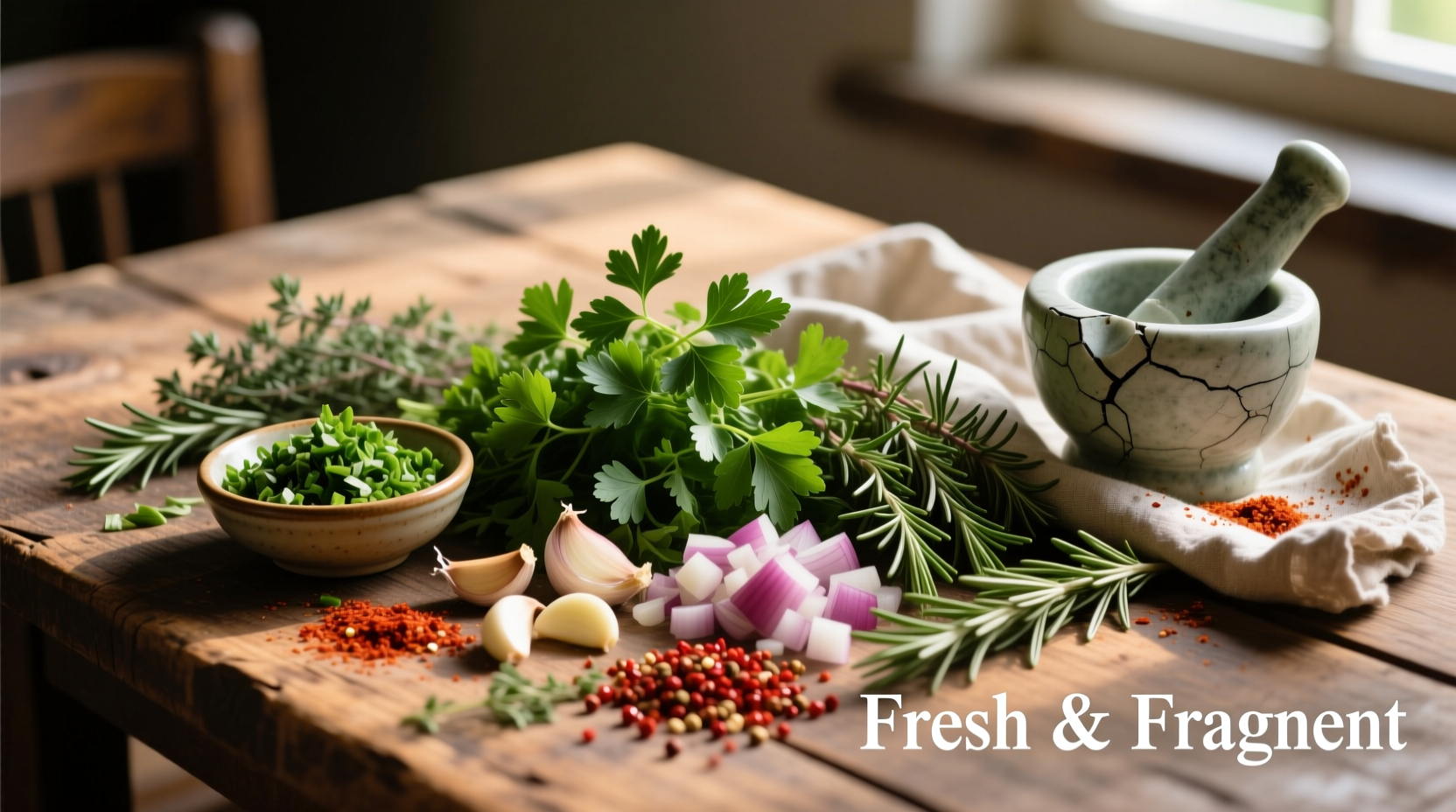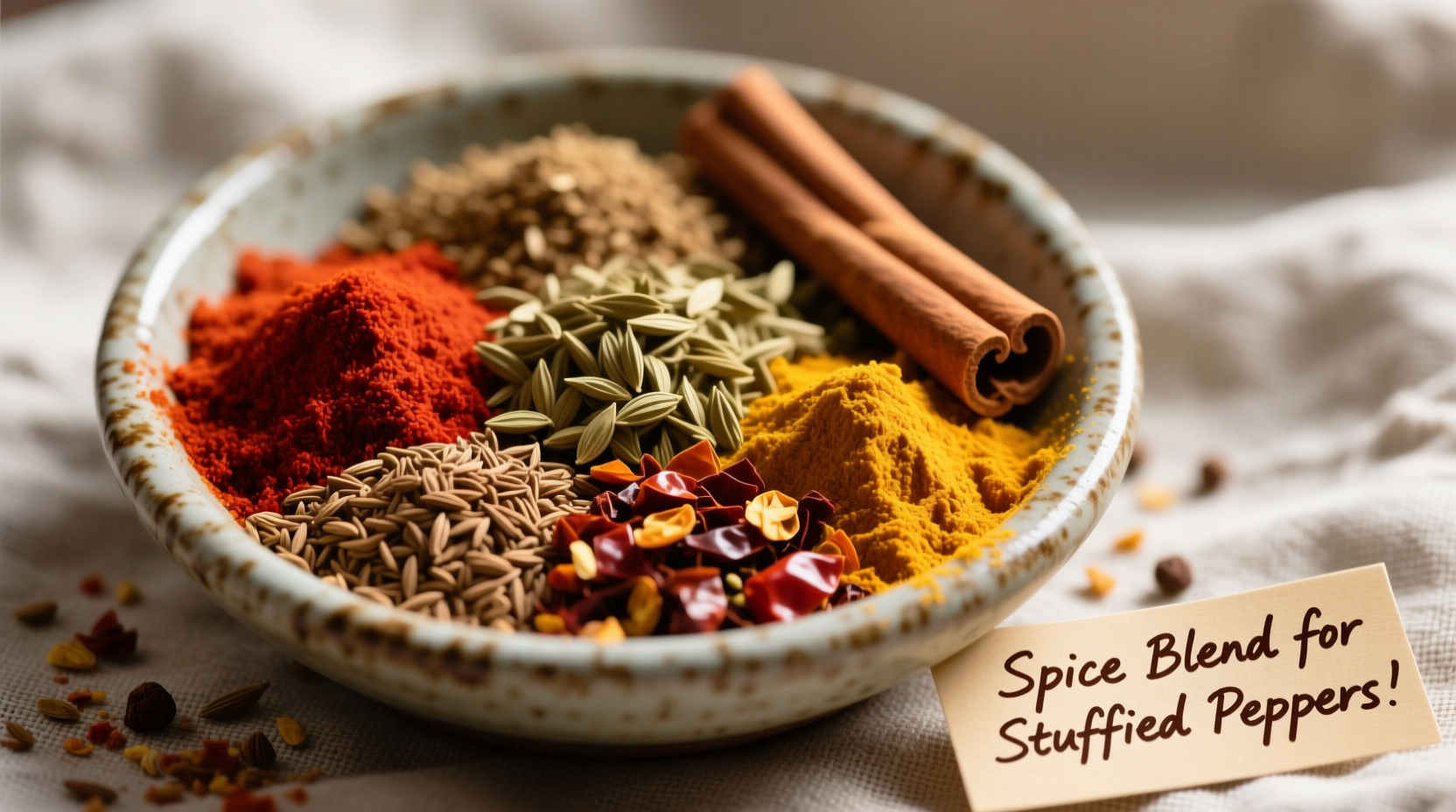Your Essential Guide to Perfect Stuffing Spices
Creating memorable stuffing starts with understanding how spices transform simple bread and aromatics into a flavor masterpiece. Whether you're preparing Thanksgiving's centerpiece or a weeknight side, the right spice combination makes all the difference. This guide reveals exactly which spices work best, when to add them, and how to avoid common seasoning mistakes that ruin texture and taste.
Why Spice Selection Matters in Stuffing
Stuffing's magic happens when spices interact with bread, broth, and aromatics during baking. Unlike sauces where spices can be adjusted at the end, stuffing's flavors meld permanently during cooking. The wrong spice balance can't be fixed after baking—making proper selection critical before you even preheat your oven.
Professional chefs like Sophie Dubois emphasize that "the foundation of great stuffing lies in understanding spice synergy. Sage provides earthiness, thyme adds floral notes, and rosemary contributes pine-like depth. Together they create complexity no single herb can achieve."
Core Spices Every Stuffing Needs
These four spices form the essential foundation for traditional American and European-style stuffing:
- Fresh sage (1-2 tbsp chopped): The non-negotiable backbone with earthy, slightly peppery flavor
- Fresh thyme (1-2 tsp leaves): Adds subtle floral notes that complement poultry
- Fresh rosemary (1 tsp minced): Contributes pine-like depth in moderation
- Freshly ground black pepper (1 tsp): Provides necessary heat without overwhelming
According to USDA cooking guidelines, fresh herbs provide more vibrant flavor than dried when used in stuffing, though dried versions work in a pinch (use ⅓ the amount of dried herbs).
When to Add Spices for Maximum Flavor
The timing of spice incorporation dramatically affects flavor development:
- Sauté aromatics first: Cook onions, celery, and garlic in butter before adding spices
- Add hardy herbs early: Rosemary and thyme benefit from 2-3 minutes cooking in fat
- Add delicate herbs late: Stir in sage and parsley just before combining with bread
- Season in layers: Lightly salt each component rather than all at once

Traditional vs Contemporary Spice Approaches
Understanding historical context helps make informed modern choices. This comparison shows how stuffing spice traditions have evolved:
| Traditional Approach | Contemporary Approach |
|---|---|
| Heavy on sage (sometimes overwhelming) | Balanced herb ratios (sage as supporting player) |
| Primarily dried herbs | Predominantly fresh herbs |
| Standard poultry seasoning blend | Custom blends with regional influences |
| Minimal citrus elements | Lemon zest for brightness |
| Rarely includes sweet spices | Subtle warm spices like nutmeg in moderation |
Avoid These Common Spice Mistakes
Even experienced cooks make these critical errors that compromise stuffing quality:
- Overusing dried sage: Creates bitter, medicinal flavors (use ½ tsp max)
- Adding all spices at once: Different herbs release flavors at different rates
- Skipping fat infusion: Spices need fat to release oils properly
- Over-salting early: Salt draws moisture from bread, creating soggy texture
- Using old spices: Dried herbs lose potency after 6-12 months
Regional Variations Worth Trying
While traditional Thanksgiving stuffing follows Northeastern American patterns, regional variations offer exciting alternatives:
- Appalachian: Adds a pinch of red pepper flakes and apple cider vinegar
- Midwestern : Incorporates a touch of celery seed and dried summer savory
- Southern cornbread: Uses smoked paprika and a hint of cayenne
- New England: Features dried marjoram and a whisper of nutmeg
The National Center for Home Food Preservation notes that regional variations often reflect local agricultural traditions and historical availability of ingredients, making each style culturally significant.
Perfecting Your Spice Balance
Follow this simple framework to achieve professional results:
- Taste your broth before adding to stuffing (it should be well-seasoned)
- Start with conservative spice amounts—you can't remove excess
- Mix dry spices separately before incorporating
- Let stuffing rest 15 minutes before baking to allow flavor absorption
- Adjust seasoning in the broth rather than directly on bread mixture
Remember that stuffing continues cooking after removal from oven, so flavors will intensify. The perfect spice balance should be slightly understated before baking.
Storing and Reviving Leftover Spiced Stuffing
Proper storage maintains spice integrity for leftovers:
- Cool completely within 2 hours of cooking
- Store in airtight container for up to 4 days
- Add splash of broth when reheating to refresh flavors
- Revive with fresh herbs after reheating (especially parsley and sage)
The FDA recommends reheating stuffing to 165°F internal temperature for food safety, which also helps redistribute spice oils throughout the dish.











 浙公网安备
33010002000092号
浙公网安备
33010002000092号 浙B2-20120091-4
浙B2-20120091-4